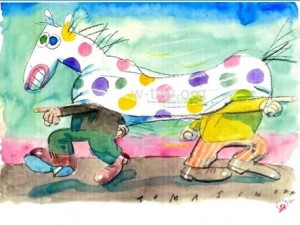Stephen S. Roasch writes: Predictably, the European Central Bank has joined the world’s other major monetary authorities in the greatest experiment in the history of central banking. By now, the pattern is all too familiar. Central banks take the conventional policy rate down to the dreaded “zero bound.” They then embrace the unconventional approach of quantitative easing (QE).
Unable to cut the price of credit further, central banks shift their focus to expanding its quantity. For the ECB and the Bank of Japan (BOJ), both of which are facing formidable downside risks to their economies and aggregate price levels, this is not an idle question. For the United States, where the ultimate consequences of QE remain to be seen, the answer is just as consequential.
QE’s impact hinges (1) transmission (the channels by which monetary policy affects the real economy); (2) traction (the responsiveness of economies to policy actions); and (3) time consistency (the unwavering credibility of the authorities’ promise to reach specified targets like full employment and price stability).
In terms of transmission, the Fed has focused on the so-called wealth effect. First, the balance-sheet expansion of some $3.6 trillion since late 2008 – which far exceeded the $2.5 trillion in nominal GDP growth over the QE period – boosted asset markets. The ECB, however, will have a harder time making the case for wealth effects, largely because equity ownership by individuals (either direct or through their pension accounts) is far lower in Europe than in the US or Japan. For Europe, monetary policy seems more likely to be transmitted through banks, as well as through the currency channel, as a weaker euro – it has fallen some 15% against the dollar over the last year – boosts exports.
The real sticking point for QE relates to traction. The US, where consumption accounts for the bulk of the shortfall in the post-crisis recovery.
Japan’s massive QQE campaign has faced similar traction problems. After expanding its balance sheet to nearly 60% of GDP – double the size of the Fed’s – the BOJ is finding that its campaign to end deflation is increasingly ineffective. Japan has lapsed back into recession, and the BOJ has just cut the inflation target for this year from 1.7% to 1%.
Finally, QE also disappoints in terms of time consistency. The Fed has long qualified its post-QE normalization strategy with a host of data-dependent conditions pertaining to the state of the economy and/or inflation risks. Moreover, it is now relying on ambiguous adjectives to provide guidance to financial markets, having recently shifted from stating that it would maintain low rates for a “considerable” time to ‘paatience’ in determining whether to raise rates.
In the QE era, monetary policy has lost any semblance of discipline and coherence. As Draghi attempts to deliver on his nearly two-and-a-half-year-old commitment, the limits of his promise – like comparable assurances by the Fed and the BOJ – could become glaringly apparent. Like lemmings at the cliff’s edge, central banks seem steeped in denial of the risks they face.

